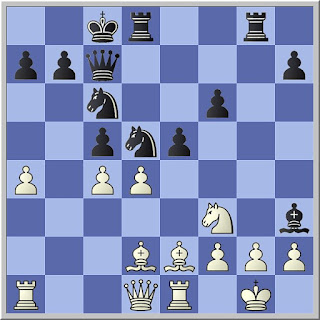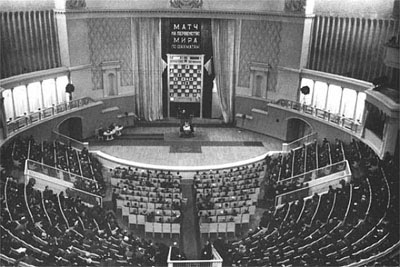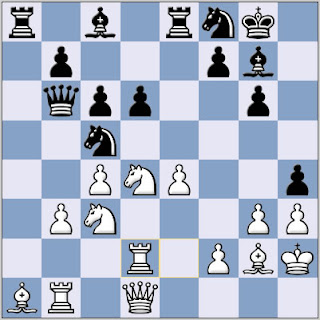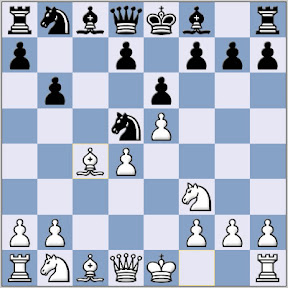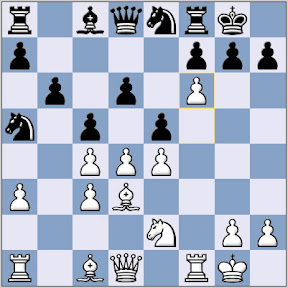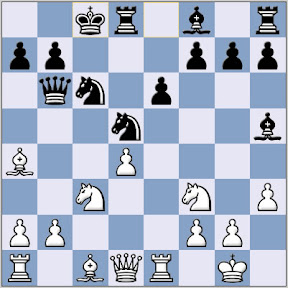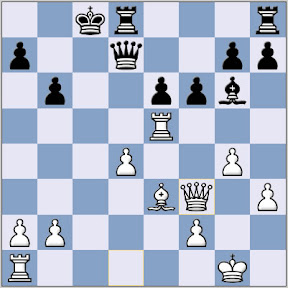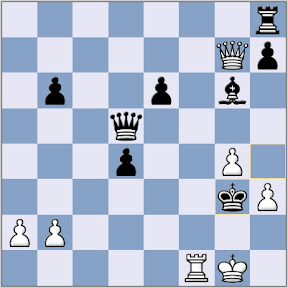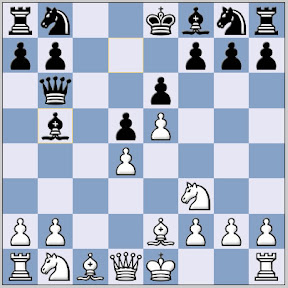In two of my games at Hartlepool, Black sprang a 'move order refinement' on me in the Queen's Gambit Declined:
1 d4 d5; 2 c4 e6; 3 Nc3and now instead of the usual
3 ... Nf6, Black played
3 ...Be7
This can be a particularly useful idea against opponents, myself included, who like to play the Exchange Variation, as it prevents the usual:
4 cd ed; 5 Bg5.
White can try
4 Nf3 and then after
4 ... Nf6; 5 cd ed; 6 Bg5 but this rules out one of the most dangerous variations of the
Exchange where White develops the knight on e2 rather than f3.
Alternatively, if White still wants to play the Exchange Variation, he can adopt a setup with the bishop developed to f4 rather than g5, i.e.
4 cd ed; 5 Bf4 c6.
There is a second idea behind
3 ... Be7 as well, and that is the quick development of the c8 bishop to an active post on f5, i.e.
4 cd ed; 5 Bf4 c6; 6 e3 Bf5.
(If Black goes 6 ... Bf5 after 3 ... Nf6 rather than 3 ... Be7 then White has the move 7 Qf3 after which he will saddle Black with doubled pawns on f6)The light squared bishop can be a problem piece for Black in the Queen's Gambit, from f5 it is not only posted actively, but also stops White's standard attacking setup with
Bd3 and
Qc2. White can try his own move order refinement with
6 Qc2 instead of e3 to prevent
6 ... Bf5, but then Black has
6 ... g6 or
6 ... Bd6.
My knowledge of the lines beginning
1 d4 d5; 2 c4 e6; 3 Nc3 Be7; 4 cd ed; 5 Bf4 c6; 6 e3 Bf5 was very limited, but I did remember that
Korchnoi had won a game against Karpov in their 1981 World Championship Match with the super sharp reply
7 g4
So, his was my choice in my 3rd round encounter with Andy Lawson at Hartlepool. After Andy's reply,
7 ... Be6, I knew
8 h4 was playable but wild, and instead adopted Korchnoi's choice against Karpov of
8 h3, and my initiative was enough force an advantage as Andy went wrong close to time control.
Coathup,R - Lawson,A [D31]
Hartlepool (3), 26.05.2007
1.d4 d5 2.c4 e6 3.Nc3 Be7 4.cxd5 exd5 5.Bf4 c6 6.e3 Bf5 7.g4 Be6 8.h3 Nd7 9.Nf3 Nb6 10.Bd3 Nf6 11.Ne5 Nfd7 12.Qc2 Nxe5 13.Bxe5 Bf6 14.Bf4 h5 15.0-0-0 Qe7 16.Kb1 a6 17.Rhg1 g5 18.Bg3 hxg4 19.hxg4 Bxg4 20.Rc1 Be6 21.Qb3 Nc4 22.Bxc4 dxc4 23.Qb6 Qd7 24.Na4 Bd8 25.Qc5 Be7 26.Qb6 Bd5 27.Nc5 Bxc5 28.Qxc5 Qe7 29.Bd6 Qe4+ 30.Ka1 Kd7 31.Be5 Rh6 32.Qb6 Ke6 33.Rxg5 Re8 34.Qc7 f6 35.Qd6+ Kf7 36.Rcg1 fxg5 37.Qxh6 Qg6 38.Qxg6+ Kxg6 39.Bf4 Rh8 40.Rxg5+ Kf7 41.Rg1 Ke6 42.Kb1 b5 43.Kc2 b4 44.a3 a5 45.axb4 axb4 46.Ra1 Rg8 47.Bg3 Kf5 48.Ra4 b3+ 49.Kc3 Ke4 50.Rxc4 Ra8 51.Rb4 Ra1 52.Rxb3 Bxb3 53.Kxb3 1-0
In the final round, Jimmy Simpson also played
3 ... Be7 against me. Suspecting he had specially prepared the line, and with me only needing a draw for the title, I adopted the 'safer'
4 Nf3 and went for a minority attack version of the Exchange Variation.
If you want to know more, I recommend taking a look at some of these books:


